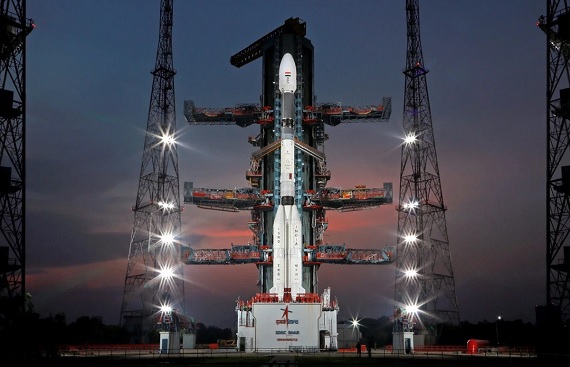India's Latest Weather Satellite INSAT-3DS Set for Launch by ISRO
By
siliconindia | Saturday, 17 February 2024, 07:37:55 AM IST

Amidst the radiant morning in Sriharikota, the Indian Space Research Organization (ISRO) achieved another historic feat in space exploration by flawlessly launching the GSLV-F14 rocket. Commencing on February 17, 2024, this mission signaled a remarkable advancement with the successful placement of the INSAT-3DS meteorological satellite into the Geosynchronous Transfer Orbit (GTO). This endeavor, conducted in partnership with the Ministry of Earth Sciences (MoES), underscores a profound stride in enhancing meteorological monitoring and disaster alert systems both within India and globally.
With the GSLV-F14 undertaking its 16th mission and its 10th flight utilizing the indigenous cryogenic engine, ISRO has not only showcased its engineering prowess but also its unwavering commitment to advancing Earth observation capabilities. The INSAT-3DS, poised to enhance weather monitoring, replaces its predecessors, the INSAT-3D and INSAT-3DR. Entirely funded by the Ministry of Earth Sciences, this satellite exemplifies India's dedication to harnessing space technology for terrestrial advantages, particularly in weather prediction and climate research. The successful deployment of INSAT-3DS also sets a significant precedent for forthcoming missions, including the highly anticipated NISAR Earth observation satellite.
In a captivating fusion of tradition and technology, ISRO's choice to bypass the number '13' in its mission naming, opting for GSLV-F14 and skipping over the potentially ominous numeral, reflects a pattern observed in its Polar Satellite Launch Vehicle (PSLV) series. This decision also resonates with the superstitious tendencies observed in space agencies globally, reminiscent of NASA's avoidance of the number post the Apollo-13 incident. This cultural homage does not diminish the scientific rigor inherent in ISRO's operations. Officials uphold a distinctive blend of traditional practices—such as coconut-breaking ceremonies, prayers at the Lord Venkateswara Temple in Tirumala, and pujas preceding rocket integrations—believing these rituals to be complementary to their scientific endeavors. Notwithstanding these traditions, ISRO's launch determinations remain firmly rooted in scientific considerations, including the optimal positioning of the target planet and precise timing for spacecraft orbit insertion.
As the INSAT-3DS satellite embarks on its mission to deliver advanced weather observations, it not only succeeds its predecessors but also sets the stage for future advancements in meteorological studies and disaster management. The GSLV-F14/INSAT-3DS mission, blending cutting-edge technology with respect for cultural traditions, epitomizes the spirit of a nation confidently stepping toward the forefront of global space exploration. This mission highlights the seamless fusion of scientific excellence and cultural ethos, reflecting ISRO's vision for upcoming missions aimed at enhancing human understanding of Earth and fortifying its inhabitants against the capricious forces of nature.
Within the vast expanse of space exploration, the triumphant GSLV-F14 launch, ferrying the INSAT-3DS, transcends mere accomplishment for ISRO; it symbolizes India's inventive ethos, technological prowess, and cultural essence. Gazing skyward, INSAT-3DS stands as a testament to the limitless possibilities of human aspiration fueled by the synergistic forces of science and heritage.



.jpg)